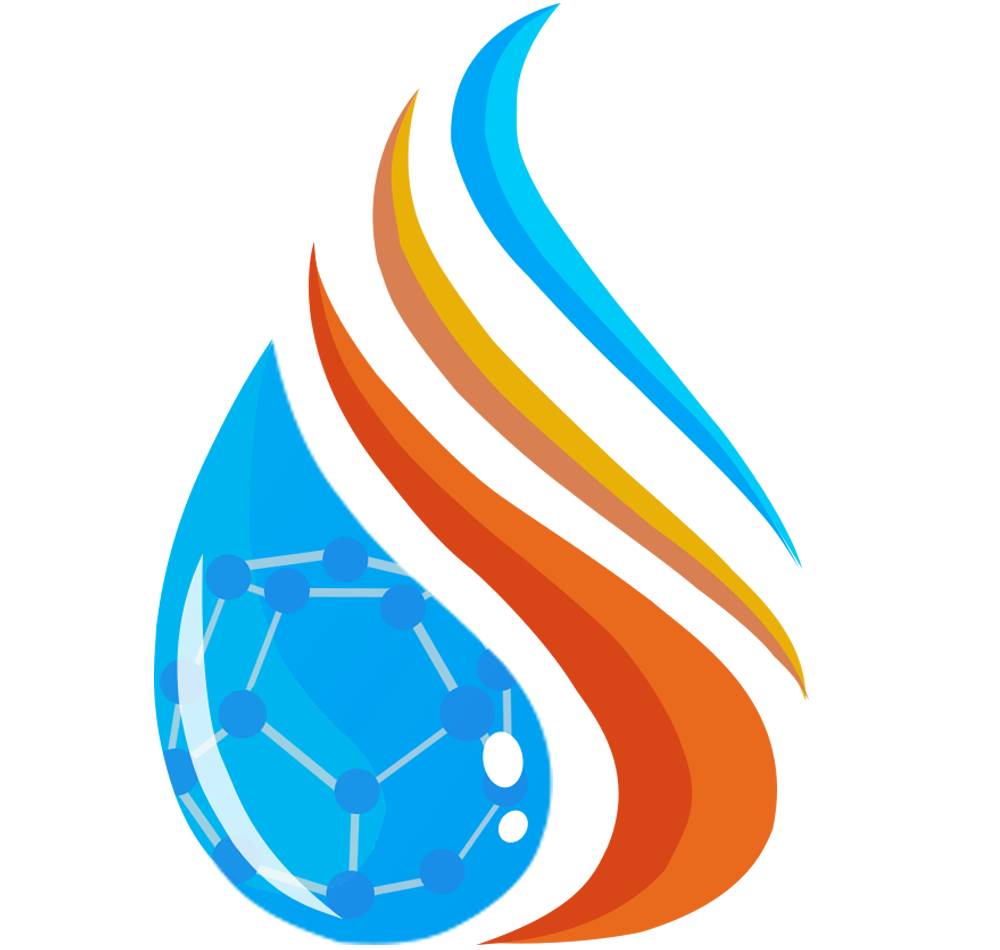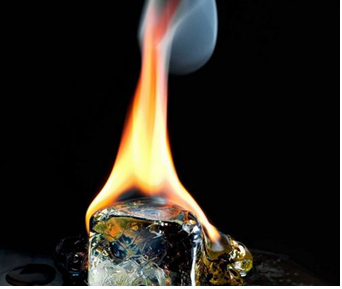《佳文速递》2025年第4期
 收藏
收藏
Investigation of scaling criteria and multiscale experiments for hydrate-based CO2 sequestration in marine sediment and depleted NGH reservoir via CO2/N2 injection
通过注入CO2/N2在海洋沉积物和枯竭NGH储层中进行基于水合物的CO2封存的缩放标准和多尺度实验研究
发表时间:2025年5月30日
发表期刊:《Chemical Engineering Science》
Yuanxin Yao, Mucong Zi, Mengya Niu, Hongyu Ye, Jun Duan, Daoyi Chen
Abstract: To analyze the potential of hydrate-based CO2 sequestration as a strategy for carbon removal, this study establishes scaling criteria for hydrate formation in marine sediments and depleted natural gas hydrate (NGH) reservoirs based on models describing hydrate formation kinetics, heat transfer, and diffusion, predicting the CO2 storage capacity and efficiency at field-scale. The mixed hydrate formation experiments via CO2/N2 injection were simulated using small-scale (V = 0.14 L) and pilot-scale (V = 22.0 L) reactors, verifying similarity and modifying the scaling criteria. Heterogeneity in hydrate growth within sediments was observed under different injection strategies, temperature–pressure, and residual gas scenarios. Field-scale predictions show that marine sediments (H, L = 100 m) in the Shenhu region of the South China Sea (P = 12.4 MPa, T = 278.2 K), can store 9120 tons of CO2 in hydrate, reaching hydrate saturation (sh) = 15 % in 2273.84 days. In depleted NGH reservoirs (H, L = 100 m) at the SHSC-4 site, (P = 14.5 MPa, T = 285.2 K), 5140 tons of CO2 can be stored, with 4191.07 days to reach sh = 15 %. The findings contribute to the understanding of field-scale hydrate formation kinetics in sediments, supporting the development of regional carbon removal.
Keywords: Hydrate-based CO2 marine sequestration; Scaling criteria; Multiscale experiments; Mixed hydrate formation; Dimensionless analysis; Field-scale prediction
Fig. 3. (a) Schematic diagram of multiscale hydrate formation experiment by CO2 /N2 injection and its similarity enlarged; (b) CO2 hydrate, CO2 /N2 mixed hydrate (CO2 /N2=50/50) and CH4 /CO2 /N2 mixed hydrate phase equilibria curves (computed from CSMGem) and schematics of submarine sediment and NGH zone in the Shenhu area of the South China sea; (c) The location of CO 2 sequestration in South China sea.
https://doi.org/10.1016/j.ces.2025.121912.
Optimized polymer systems for low-temperature stimulation of gas hydrate-bearing sediments
用于低温激发含天然气水合物沉积物的优化聚合物系统
发表时间:2025年5月27日
发表期刊:《Journal of Molecular Liquids》
Isaac Wilson, Shanker Krishna
Abstract: Production from gas hydrate reserves has been limited by the low permeability of hydrate-bearing sediments (HBS). While techniques like multi-well drilling and horizontal wells have improved reservoir access, enhancing reservoir conductivity through hydraulic fracturing is a promising next step. This study evaluates the compatibility of conventional linear and crosslinked gels with polysaccharides and synthetic polymer-based gas hydrate inhibitors for low-temperature stimulation. Established inhibitors like xanthan gum (XG), pectin, and polyvinylpyrrolidone (PVP) were tested in varying concentrations with guar gum (GG) and borate crosslinked gels. XG integrated linear gels exhibited significantly improved rheological performance, with viscosity increases ranging from 30 % to 90 % and viscoelastic enhancements between 90 % and 200 %, particularly under low-temperature conditions. These improvements can be attributed to synergy between XG and GG. Pure pectin gels exhibited a substantial, though disproportionate, increase in viscosity at low temperatures (up to 407 % at 5 °C) compared to ambient conditions. However, the addition of GG was necessary to improve elasticity and ensure stability. The incorporation of GG into the pectin matrix significantly enhanced both the viscous and elastic characteristics of the gel. The work also underscores the limitations of pectin in crosslinked systems, particularly under high pH conditions, where rapid deswelling and phase separation were observed within minutes after the preparation of sample. While PVP-integrated gels exhibit stability in both linear and crosslinked configurations, their rheological properties are compromised at temperatures below 15 °C, leading to a loss of structural integrity. This characteristic renders them more suitable for hydrate inhibition applications than for enhancing the fracturing performance. This novel optimization of polymer blends for stimulation fluids enhances the efficiency and stability of operations in gas hydrate-bearing sediments (GHBS), offering a promising pathway toward energy security and the sustainable, clean production of energy resources.
Keywords: Clean energy source; Gas hydrates; Inhibitor integrated stimulation; Polymer blending; Fossil hydrogen; Sustainability
Fig. 3.Flow chart of the experiment.
https://doi.org/10.1016/j.molliq.2025.127839.
Numerical simulations of multiple transport processes associated with gas hydrate formation and dissociation in marine sediments
与海洋沉积物中天然气水合物的形成和解离有关的多种迁移过程的数值模拟
发表时间:2025年6月18日
发表期刊:《International Journal of Heat and Mass Transfer》
Ran Yang, Linsen Zhan, Haotian Liu, Wenjiu Cai, Hailong Lu
Abstract: The formation and dissociation of gas hydrate in sediments involve multiscale processes, encompassing multi-component and multi-phase flow, heat and mass transfer, phase changes, and solid structure transformation. Hydrate simulations at different scales employ distinct assumptions, models, and parameters to address scale-specific phenomena, and thus face different challenges. In this review, we systematically summarized and compared multiscale simulations regarding their characteristic lengths, time spans, solving methods, and physical parameters. We provided a comprehensive analysis of different numerical methods, including methodology, models, applications, validations, strengths, and limitations. Additionally, fundamental procedures and a flowchart for conducting multiscale simulations were outlined in this work. Key challenges such as scale-dependent behavior and multiscale coupling can be minimized through dimensionless number analysis, advanced upscaling technology, and AI-enhanced multiscale simulations. By evaluating simulation methods across different scales, this review serves as a comprehensive guide for pinpointing appropriate scales and optimizing numerical approaches for targeted research objectives.
Keywords: Hydrate formation and dissociation; Multiple transport processes; Scale identification; Numerical methods
Fig. 3.The classification of hydrate simulations at different scales.
https://doi.org/10.1016/j.ijheatmasstransfer.2025.127399.
Effect of heterogeneous hydrate distribution on permeability: Pore filling hydrate presents high permeability
异质水合物分布对渗透性的影响:孔隙填充水合物呈现高渗透性
发表时间:2025年5月31日
发表期刊:《Gas Science and Engineering》
Hiroya Takahisa, Yoshihiro Konno, Yusuke Jin, Norio Tenma
Abstract: To explore natural gas hydrate in sediment, the permeability plays a vital role in estimating fluid flows and production potential. Although natural gas hydrate exhibits a heterogeneous distribution with different pore habits, the combined effects of heterogeneity and pore characteristics have not been studied well. In this study, a two-dimensional homogeneous porous medium was constructed to simulate single-phase fluid flow with different sizes and number of grain coating (GC) or pore filling (PF) hydrate particles. The results showed that under the same saturation of PF hydrate, heterogeneous hydrate distributions exhibited higher permeability than homogeneous distributions. This higher permeability can be attributed to the critical pore radius of the preferential flow paths. The heterogeneous distribution left some pores unoccupied without reducing the critical pore radius. In contrast, for GC hydrate, heterogeneous hydrate distributions exhibited lower permeability than homogeneous hydrate distributions. Despite the presence of preferential flow paths unoccupied by gas hydrate, the continuous blockage induced by GC hydrate decreased the permeability. Furthermore, we analyzed the tortuosity and heterogeneity degree of the gas hydrate. GC hydrate exhibited higher tortuosity under heterogeneous distributions. A modified model based on a classic theory showed good correlations between permeability and tortuosity. The heterogeneity degree exhibited a negative correlation with both hydrate saturation and tortuosity. This study shows the importance of preferential flow paths in the permeability, explaining the high permeability characteristics of natural hydrate-bearing sediment.
Keywords: Natural gas hydrate; Preferential flow path; Pore habit; Two-dimensional flow simulation; Tortuosity; Critical pore radius; Tokyo model
Fig. 5. Streamline of homogeneous distributions. The unit of the color bar is ms−1.
https://doi.org/10.1016/j.jgsce.2025.205682.
Advancement perspectives of CH4 recovery from methane hydrate reservoirs via N2/CO2-CH4 exchange: Experiments, simulations, and pilot test applications
通过N2/CO2-CH4交换从甲烷水合物储层中回收CH4的发展前景:实验、模拟和中试应用
发表时间:2025年6月10日
发表期刊:《Gas Science and Engineering》
Erasto E. Kasala, Jinjie Wang, Asia Majid, Mbula Ngoy Nadege, Cyril P. Makembe
Abstract: Despite significant progress in CH4 recovery from CH4 hydrate reservoirs via N2/CO2-CH4 exchanges, critical research gaps persist, particularly in understanding the molecular mechanisms driving gas exchange under varying pressure and temperature conditions. Recent studies have focused on macroscopic outcomes, such as gas recovery rates, while neglecting the nanoscale interactions that govern these processes. In addition, there is a lack of integrated modeling frameworks that incorporate experimental data and simulation models to predict the mechanisms of N2/CO2-CH4exchanges. On the other hand, field-scale pilot-test applications have been limited, with few studies exploring the scalability of laboratory findings to real-world conditions, particularly in diverse geological settings. This review synthesizes insights from recent laboratory experiments, molecular dynamics simulations, and field-scale pilot tests, offering a holistic view of the N2/CO2-CH4 exchange process. The findings revealed key factors influencing gas exchange efficiency, such as optimal gas mixtures, temperature, pressure, and sediment composition. Laboratory experiments have revealed that a balanced N2/CO2 gas ratio of 1:4 N2/CO2 can significantly enhance CH4 recovery and CO2 storage depending on the type and content of clay minerals present in sediments, particularly at temperatures around 274.2 K and pressures of approximately 10 MPa. However, other N2/CO2 ratios exhibit favorable performance under specific reservoir conditions. Specifically, a 41:59 N2/CO2 ratio achieves optimal results at slightly higher temperatures of 277 K - 283 K and lower pressures of 7.1 MPa, 80:20 N2/CO2 effective at temperatures of 274.2 K - 284.2 K and pressures between 7.1 MPa and 10 MPa. Also, the ratio of 0.77:0.23 N2/CO2 has been shown to enhance performance in conditions with lower temperatures of 261.2 K - 284.2 K and moderate pressures of 3 MPa - 7 MPa. Yet, challenges remain in optimizing these conditions for large-scale applications, particularly in heterogeneous geological settings. These findings highlight the need for further research to identify the optimal gas mixture ratio for different geological settings and operational conditions. Furthermore, advancing simulation models to capture complex gas dynamics in real-world reservoir conditions critical for refining predictions of gas exchange behavior were systematically presented in this research. The importance of pilot test deployments in fields such as Ignik Sikumi and Messoyakha was also discussed, showcasing the promise and challenges of scaling laboratory findings to real-world applications. Moreover, the potential for long-term CO2 storage in hydrate reservoirs, with minimal atmospheric leakage risks of <1 %, were highlighted. Additionally, the review identifies key areas for future research and proposes potential interventions, including the refinement of experimental methods, the development of multi-scale models, and the integration of advanced monitoring technologies to enhance the scalability and environmental safety of CH4 recovery technologies. The findings from this research are crucial for optimizing the efficiency and sustainability of N2/CO2-CH4 exchange technologies by enhancing comprehension regarding screening, designing, and formulating N2/CO2-CH4 exchange strategies.
Keywords: CH4 hydrates; CH4 recovery; N2/CO2-CH4 exchange; Energy
Fig. 22. Conceptual model and schematic representations of CO2 sequestration and CH4 production processes..
https://doi.org/10.1016/j.jgsce.2025.205685..
Numerical investigation of particle migration and pore clogging during methane hydrate extraction in porous media
多孔介质中甲烷水合物提取过程中颗粒迁移和孔隙堵塞的数值研究
发表时间:2025年6月9日
发表期刊:《Gas Science and Engineering》
Tuo Wang, Mengli Li
Abstract: Sand production is an important research direction in hydrate extraction, which involves particle migration and pore clogging mechanism in gas-liquid two-phase flow. This study employs a coupled resolved CFD-DEM-VOF (computational fluid dynamics, discrete element method, and volume of fluid) approach to simulate particle dynamics in a microfluidic chip with a column matrix. The work elucidates the mechanisms of particle migration and pore clogging in gas-liquid two-phase flow through porous media, while systematically evaluating the effects of key multiphase parameters. The results indicate that when gas is injected, the water flow creates a fluid channel between the bubbles, accelerating the fluid velocity within the channel. As a result, particles migrate along the fluid channel, leading to increased aggregation and a higher probability of pore clogging. In contrast, the fluid velocity outside the channel is slower. Many particles in the low velocity regions are unable to migrate, further contributing to the risk of pore clogging. Parameter analysis reveals that both high and low gas injection fractions reduce the likelihood of pore clogging. Additionally, both excessively high and low contact angles negatively impact particle migration. Furthermore, the probability of pore clogging increases with rising surface tension and particle injection rate.
Keywords: Particle migration; Pore clogging; Two-phase flow; Methane hydrate; Discrete element method
Fig. 10. The evolution of particle distribution of Model-1 during simulation.
https://doi.org/10.1016/j.jgsce.2025.205687.
 UPC-WY
UPC-WY

 DWOG-Hyd 2021
67帖子
DWOG-Hyd 2021
67帖子
 Haotian Wang
9帖子
Haotian Wang
9帖子
